|
India's liquid-propellant SRBM "Prithvi"
Norbert Brügge, Germany
|
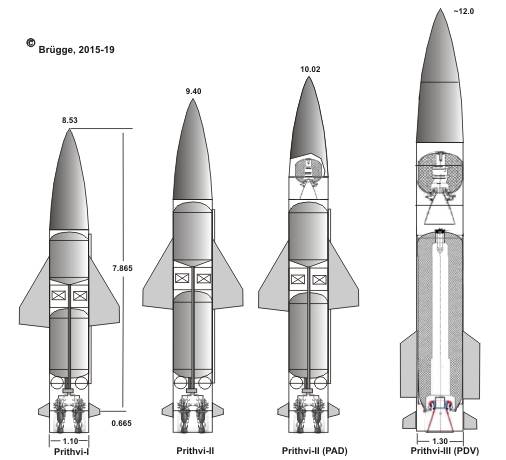
|
Prithvi-I (SS-150)
The Prithvi-I is a short-range, road-mobile, liquid-propellant ballistic
missile. India developed the missile with assistance. The motor and the
guidance system are based on the Soviet surface-to-air missile (SAM) product
line. They were already components of the canceled Indian SAM "Devil"program.
|
Project �Devil�
The �Devil� missile was developed by India in the 1970s. The goal
of Project �Devil� was to produce a short-range surface-to-air missile
through reverse engineering of a Soviet Union high-altitude, command
guided, surface-to-air missile.
The project was overseen by the Defense Research & Development Laboratory
(DRDL) of India. The model for Project �Devil� was the SA-2 Guideline,
a Soviet Union missile which the DLDR intended to reverse engineer.
Project �Devil� was officially launched in January 1972. DLDR subcontracted
some of its labor, hiring the Hindustan Aeronautics Limited and Bharat
Heavy Plates & Vessels Limited to cast a 350kg magnesium liquid-fuel
engine frame and a solid-booster respectively.
In January 1975, the Indian Space Research Organisation was appointed
to run an external review of Project �Devil� and in March 1975 found
it had been successful in several areas, if not in liquid propulsion,
and should be permitted to continue. It ran for several more years
before being completely discontinued in 1980, by which point DRDL
had produced several components for Devil, including a solid rocket
booster with high-strength steel casings and a specific impulse of
200 seconds, and a second stage three-ton liquid-propellant engine,
fueled by TG-fuel (a combination of Xylidiene and Tri-ethylamine),
oxidized by inhibited red-fuming Nitric Acid and Di-nitrogen Tetroxide.
The Devil components were later subsequently modified and utilized
as components in other systems, for example for the Prithvi missile
developed in the 1980s.

|
India began developing the Prithvi-I in 1983. The missile is 8.5 m
long, 1.1 m in diameter. Its body is made from aluminum alloy and
its wings are made from magnesium. There are four clipped-tip delta
wings at mid-body and four small aerodynamic control fins at the rear.
|
|
Prithvi is a single-stage missile with a liquid-propellant
engine, made by the Soviet
KB Isayev
(derivative of S2.711V engine). It used two motors side-by-side
that provide aerodynamic control as well as thrust vectoring. The
thrust (app. 2x 35 kN) enabling a variable total impulse
to be programmed for different payload and range requirements. The
rocket-propellant is most likely TG-02/AK-20F, according
to the origin of the engine. The missile has a maximum range of
150 km.
The Prithvi-I first test flight was in 1988 and it officially entered
service in 1994.
Prithvi-II (SS-250)
The Prithvi-II is similar to the Prithvi-I in many ways, However,
with extended tanks for more fuel.
India first tested the Prithvi-II in 1996. In its current configuration,
the missile is 9.4 m long and 1.1 m in diameter, and weighs 4,500
kg. It uses the same two liquid-propellant engines as the Prithvi-I,
however an improved liquid-propellant (TG-02/AK-27I ?) over
its predecessor. The engine control allows the missile to stop climbing
when it reaches an altitude of 30 km, travel horizontally at this
altitude, and dive on its target at an 80� angle.
In 2002 management of the Prithvi-II was shifted from the Indian
Air Force to the Indian Army and also to the Indian Navy. The naval
variant is called "Dhanush". The missile has a maximum range
of 250 km. Development tests on the Prithvi-II began in 1992. Regular
production began around 2002.
|
|
Prithvi-I |
|
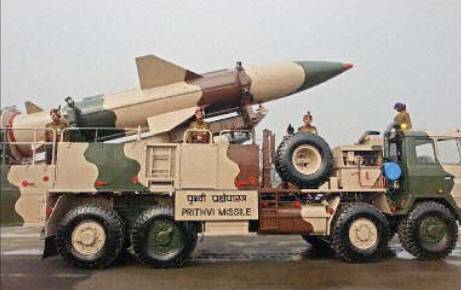
|
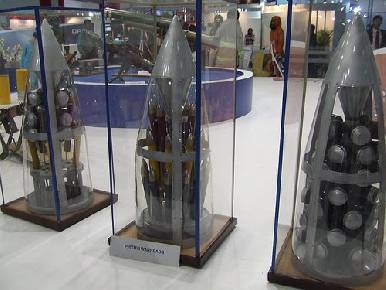
Prithvi warheads
|
|
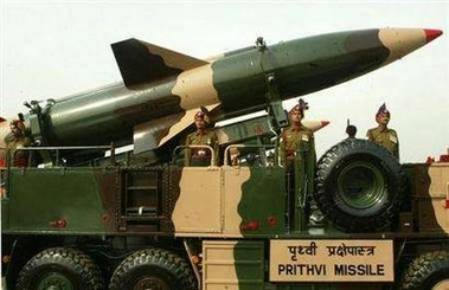
|
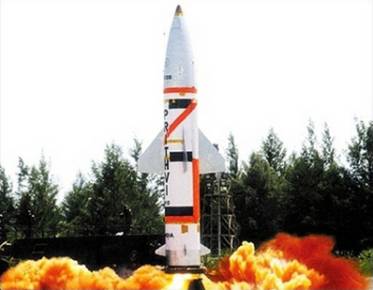
|
|
Prithvi-II |
|

|
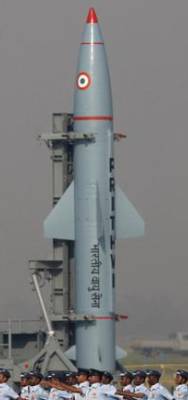
|

|
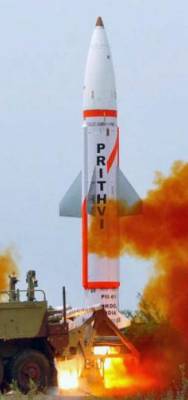
|
|
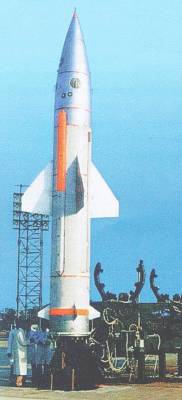
|
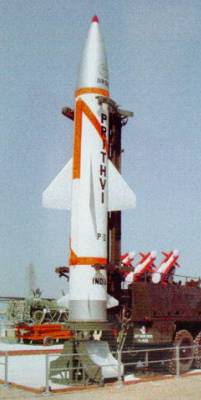
|
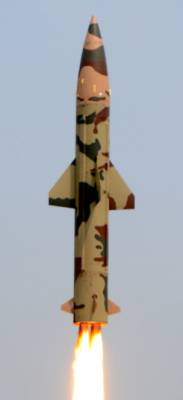
|
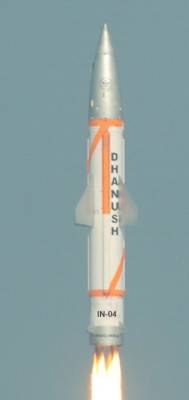
|
|

Single engine (Typ
Isayev)
|
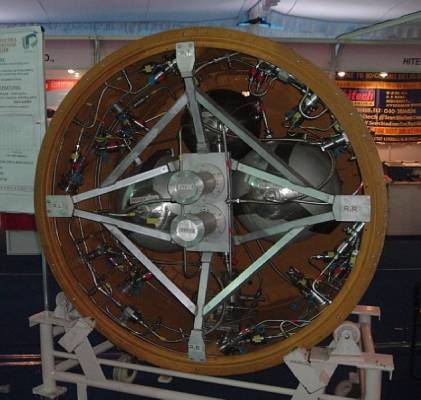
View into the engine
bay
|
|

Engine bay

|

Core stage upper
part
|
|

|
|
Prithvi-II
Air Defence (AD) target vehicle |
|
Currently, the �Defence Research and Development
Organisation� (DRDO) developing for India
an Air Defense System, based on two different interceptor
missiles:
Prithvi Air Defense
interceptor (PAD)
Advanced Air Defense interceptor (AAD
The Prithvi-II
SRBM is used as target-object for the tests (ground
based vehicles called TGT). The naval target
version is called "Dhanush"
|
|

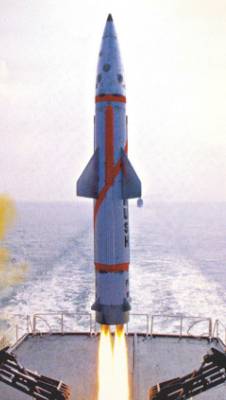
Dhanush
|
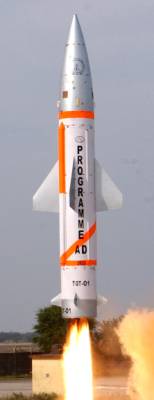
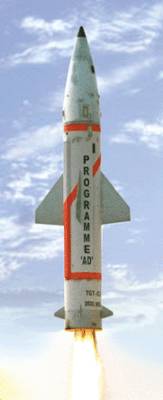
TGT-01 &
TGT-04
|
|
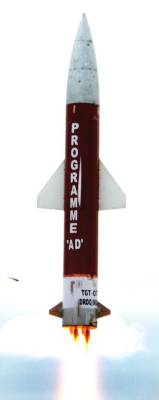
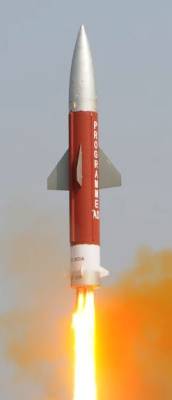
TGT-05
& TGT-06
|
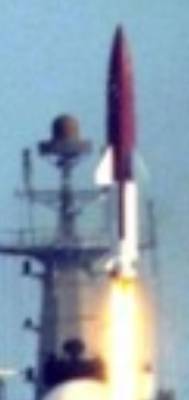

Danush
& TGT-12
|
| |
|
Prithvi-II Air Defense (PAD/PADM) interceptor |
|
The
Prithvi Air Defence (PAD) is an anti-ballistic
missile developed to intercept incoming ballistic
missiles outside of the atmosphere (exo-atmospheric).
Based on the Prithvi missile, PAD is
a two stage missile with a maximum interception
altitude of 80 km. The missile is 10.0 m long,
1.1 m in diameter, and weighs 4,958 kg.
The first stage is a liquid fuelled motor
while the second stage is solid fuelled. It
has maneuver gas-thrusters which can generate
a lateral acceleration. Guidance is provided
by an intertial navigation system with mid-course
updates from LRTR and active radar homing
in the terminal phase. PAD has capability
to engage the 300 to 2,000 km class of ballistic
missiles at a speed of Mach 5.
The advanced interceptor PADM weighs
5,200 kg and is armed with a "kill vehicle"
which is equipped with a innovative system
to allow the missile to maneuver. The "kill
vehicle" has additional a small solid fuelled
motor.
|
|
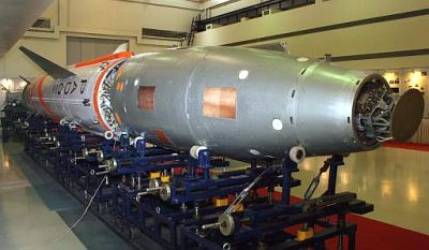
PAD
with radar seeker on head
|

|
|
Date |
Interceptor |
Launch
site |
Prithvi
Target |
Launch
site |
|
27.11.2006
|
PAD-01
|
Wheeler
Isl.
|
TGT-01 |
Chandipur
T.R. |
|
06.12.2007
|
PAD-02
|
TGT-02 |
|
06.03.2009
|
PAD-03
|
Dhanush-05 |
Ship |
|
15.03.2010
|
AAD-1
|
TGT-03 |
Chandipur
T.R. |
|
24.09.2010
|
PAD-04
(PADM)
|
TGT-04 |
|
26.07.2010
|
AAD-2
|
TGT-05 |
|
06.03.2011
|
PAD-05
(PADM)
|
Dhanush-07 |
Ship |
|
10.02.2012
|
AAD-3
|
TGT-06
|
Chandipur
T.R. |
|
23.11.2012
|
AAD-4
|
TGT-07
|
|
06.04.2015
|
AAD-5
|
TGT-08
|
|
27.04.2015
|
PDV-01
|
Dhanush+
(?) |
Ship |
|
26.11.2015
|
PDV
|
Dhanush+
(?) |
Ship |
|
16.02.2016
|
PDV
|
TGT |
Chandipur
T.R. |
|
15.05.2016
|
AADM
|
TGT |
|
07.07.2016
|
PDV
|
Dhanush+
(?) |
Ship |
|
21.11.2016
|
PDV
|
TGT |
Chandipur
T.R. |
|
11.02.2017
|
PDV
|
Dhanush+
(?) |
Ship |
|
01.03.2017
|
AADM
|
TGT-12
|
Chandipur
T.R. |
|
02.06.2017
|
PDV
|
Dhanush+
(?) |
Ship |
Note: This (my) list
is with caution to enjoy
|
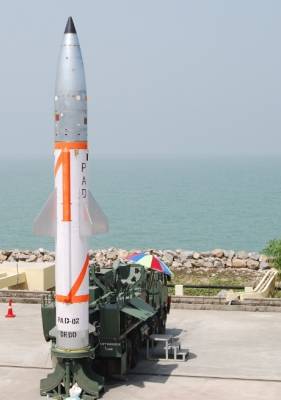

PAD-02 interceptor
|
|
Prithvi-III Defence Vehicle (PDV)
interceptor |
India has tested
a new Exo-Atmospheric variant of
Prithvi, the Prithvi-III Defence
Vehicle (PDV) interceptor, capable
of engaging ballistic missiles fired
from distances up to 2,000 kilometers.
The PDV is designed to destroy such
targets outside the earth�s atmosphere.
On the test that took place at the
Wheeler Island, of the Orisa coast
on
April
27, 2015,
the interceptor has destroyed its
target at an altitude of 120 kilometers
above sea level. The demonstrated
altitude has substantially surpassed
that of previous Prithvi Air Defence
(PAD) missile, which were performed
at 75 km altitude.
Both the interceptor and the target
missile equipped with (solid fuel)
motors had been specially developed
for the PDV mission. The target
had been developed for mimicking a
hostile ballistic missile approaching
from more than 2,000 km away. After
the target missile was fired, the
radar-based system detected and tracked
the ballistic missile. Soon after,
the computer network, with the help
of data received from radars, predicted
the trajectory of the incoming ballistic
missile and gave requisite command
to fire the missile.
The PDV interceptor uses inertial
navigation guidance to establish the
initial course to a position in space
where it is expected to locate its
target, at that phase an Infrared
(IR) seeker acquires the target and
updates the missile�s mission computer
to guide the weapon to an intercept
course.
Powered by solid propellants, the
two-stage PDV interceptor (diameter
1.30m, length about 11.9m) is
fitted to an innovative system for
controlling the vehicle at an altitude
of over 150km, and is anticipated
to replace the programme air defence
(PAD) interceptor.
Note: The first stage
solid motor has the same length and
diameter as the first segment of the
Agni-IIAT (Agni-IV). |
|
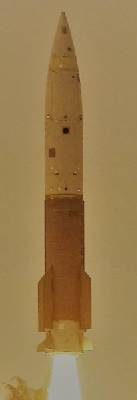
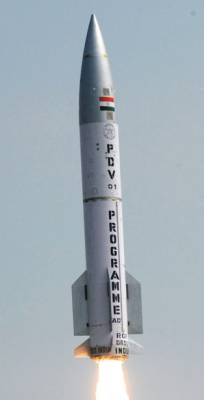
PDV
test launch and PDV-01
|

Kill
vehicle propulsion unit
with some thrusters for path correction
|
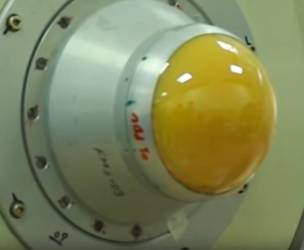
Kill vehicle seeker
|
|